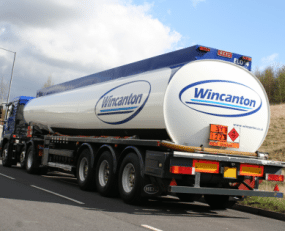
Wincanton’s preliminary annual results last week confirmed that it’s making good progress, despite continuing to burn cash at operating level, which is mainly due to pension deficit payments.
Revenues grew 4.4% on a like-for-like basis in the 12 months ended 31 March, hitting £1.14bn for the full year. These like-for-like numbers excluded the contribution of Wincanton Records Management (WRM), which was sold in November 2015 to Restore plc for £55.7m.
On a reported basis, and before “other items” totalling £30.5m, EBITDA rose 2% to £65.4m, while EBIT grew 2.4% to £50.9m year-on-year. However, excluding the WRM sale, EBITDA and EBIT rose by 5.3% and 5.4% respectively.
One of the biggest highlights was the reintroduction “of dividends, with a recommended final dividend of 5.5p proposed for 2015/16”, representing the first dividend payment since 2011. The dividend which implies a trailing yield of 2.8%, and a trailing payout ratio of 23%, based on earnings per share (EPS) of 23.9p in 2015.
Its dividend policy is expected to be progressive “with annual growth broadly matched to growth in underlying earnings”, Wincanton said.
EPS grew 13.3% annually (2015: 21.1p), driven by higher operating profits and lower finance and tax charges. Core operating margins were slightly lower year-on-year, with EBIT margin falling 10 basis points to 4.4% year-on-year.
Wincanton flagged new business wins, including a five-year contract to manage B&Q’s distribution centres, and a three-year agreement to provide transport and logistics services to Halfords. Contract renewals were also signed with long-established customers, including HJ Heinz and Müller Milk and Ingredients, which was previously known as Dairy Crest.
Its main revenue driver was contract logistics, which represented 85% of group revenues, and booked annual sales of £979m (up 5.4% year-on-year), yielding a 4.9% EBIT margin.
Meanwhile, the smaller specialist businesses unit saw a decline in underlying profitability, down from 2.7% to 1.5% year-on-year. Specialist businesses reported EBIT of £2.5m – down from £4.9m one year earlier – on lower revenues, which declined 5.8% to £168.2m.
Retail general merchandise, the biggest revenue contributor under contract logistics, enjoyed an 18.2% rise in revenues to £261.5m, and was closely followed by retail grocery actives, where sales fell 3.2% to £229.8m.
The fast-moving consumer goods (FMGC) division ranked third by turnover (up 4.7% to £188.1m year-on-year), while construction activities generated sales of £153.1m, rising 13.2% year-on-year. Finally, the smaller yet more cyclical tanker and bulk operations saw revenues decline 15.4% to £80m.
The revenue increase in contract logistics was mainly driven by volumes and new business wins in the retail general merchandise and construction sectors, which accompanied a good level of FMCG volumes.
However, the performance of the specialist businesses segment was mixed. Following the disposal of WRM, the unit comprises Wincanton container logistics and the vehicle maintenance and repair business, also known as “Pullman”. Containers and Pullman generated £79.7m and £73.6m of revenues respectively, but both dilute Wincanton’s underlying margins.
Its shares, which change hands at 190p, or 10.8% below a 52-week high of 213p, trade at lowly price-to-earnings multiples of about 9x and 8x for 2016 and 2017 respectively. Its net debt position looks manageable, but the group is still burning cash at operating level, with negative free cash flow in the region of £30m.
Source: Transport Intelligence, June 14, 2016
Author: Alessandro Pasetti